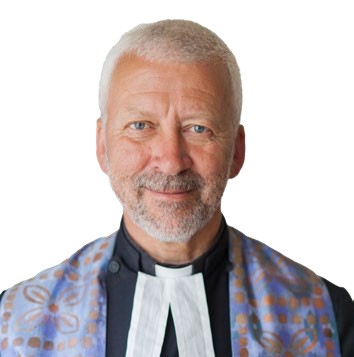Out of comfort zones
The Rev Dr Richard Frazer reflects on the value and benefit of pilgrimage and retreat.

The Rev Dr Richard Frazer
FOR some time I have cherished the idea of organising pilgrimages for fellow ministers and others in the church who might benefit from a time of physical retreat.
As we read about Jesus’ ministry, he is on the move just about all the time. He is a pilgrim, the recipient of hospitality as well as occasionally hostility. He does not always wait for people to come to him; instead he goes out to meet people where they are. He also takes time to be apart from crowds and seeks out silent places to pray, plan and seek the strength he needs for all he has to face. It is an itinerant ministry, something for us to pay attention to in the present. The movement that emerged after the first Easter took the name, ‘The People of the Way’ and the creation of church buildings came later.
Of course, our sanctuaries and houses of prayer are vital. We need places where we can worship and convene the community of faith. But sauntering about, bumping into people and making the time to chat and listen, as well as finding time to be alone and silent, have been amongst the most productive aspects of my 40 years of ministry. I have always loved being a ‘parish’ minister, there to welcome all.
Recently I guided a group of 14 American Methodists along the St Cuthbert’s Way, a 100-kilometre route through the Scottish Borders from Melrose to Lindisfarne. All of these people were active in their own church communities back home. Some were clergy and others serving their congregations in some capacity.
What was so uplifting about the experience was the way in which people responded to the physical challenge of walking such a long way through sodden ground when many of them were not used to long distance walking. You learn things about yourself when you break free from your comfort zone. In addition, though we experienced a lot of rain, the intense beauty of the Borders countryside was uplifting. Nature has its own ability to heal and they all came through refreshed for ministry back home.
Then there are the stories the landscape and the people have to tell about their place, stories of faith etched in hearts and stone. In the case of the Borders, we heard about the life of St Cuthbert, but also the stories of faith communities along the way that see offering hospitality to pilgrims as a growing part of their ministry. We visited some of the Border Abbeys that speak of an extraordinarily productive time in the story of faith in pre-Reformation Scotland from which there are things to learn for today.
We arrived on the Holy Isle of Lindisfarne, and found ourselves caught up in another sacred island, where, like on Iona, the faith of numerous generations persists and finds constant renewal. The Community of Aiden and Hilda speak of their ambition to “restore an holistic Christian spirituality reconnecting with the Spirit and the Scriptures, the saints and the streets, the seasons and the soil, weaving together the separated strands of Christianity and healing the land”. What an inspiring and relevant ambition for the times in which we are living.
“
He does not always wait for people to come to him; instead he goes out to meet people where they are.
We have a rich story of faith in our nation. It has weathered many shocks and challenges, but faith continues and the Spirit burns brightly still. Perhaps if we got out and about more, immersed ourselves in the landscape and the stories it has to tell, and the people and communities we meet on our journeys, we will have cause to rejoice that the Spirit of the living Christ will never abandon us, just as Jesus promised. ¤